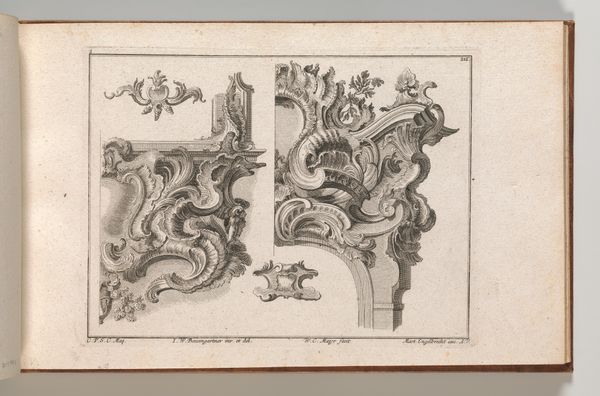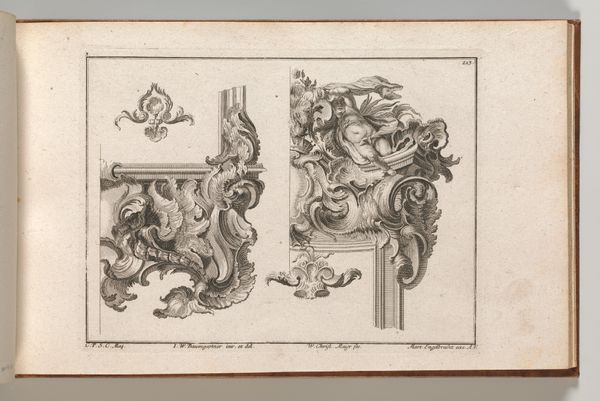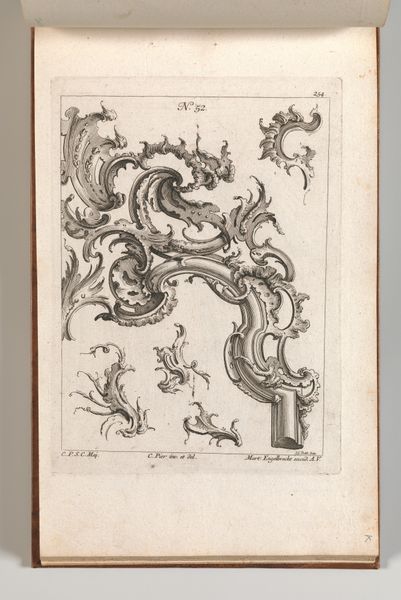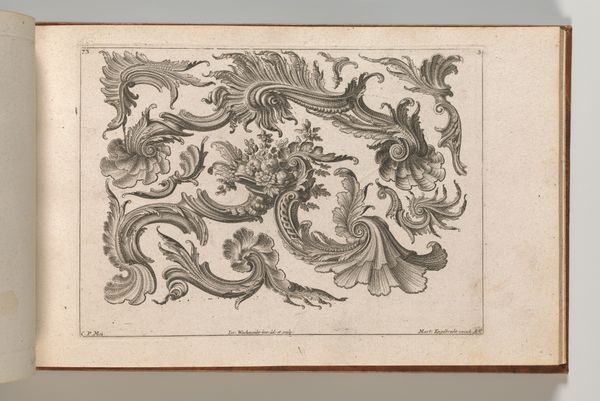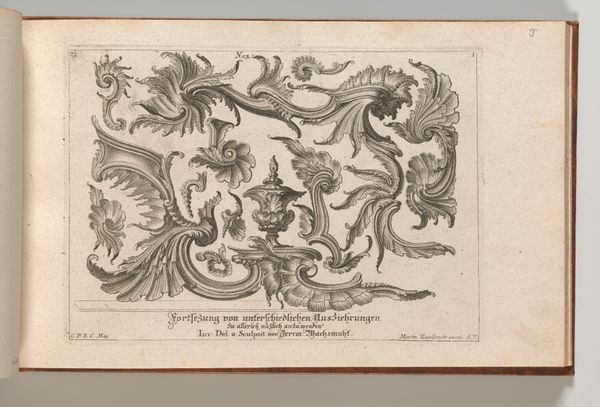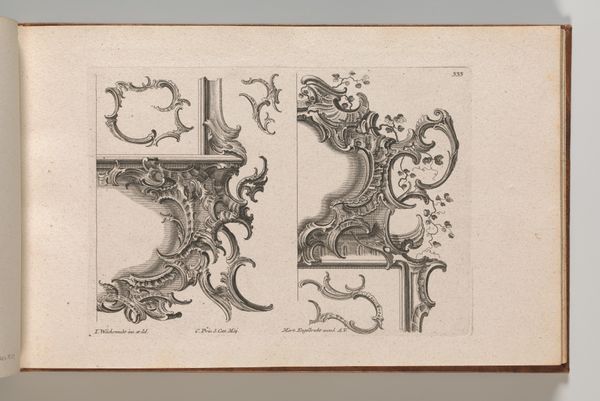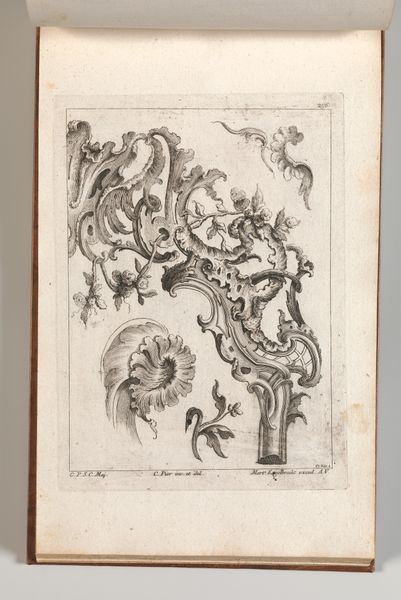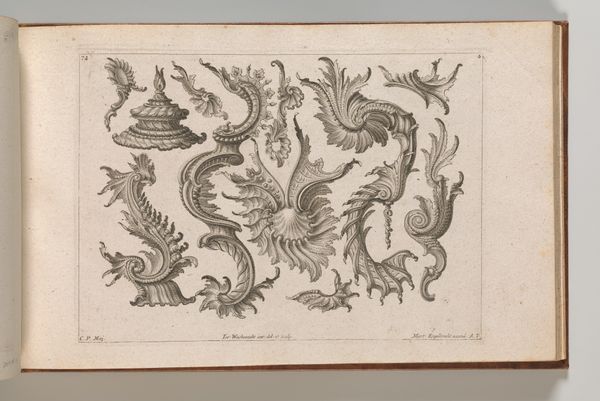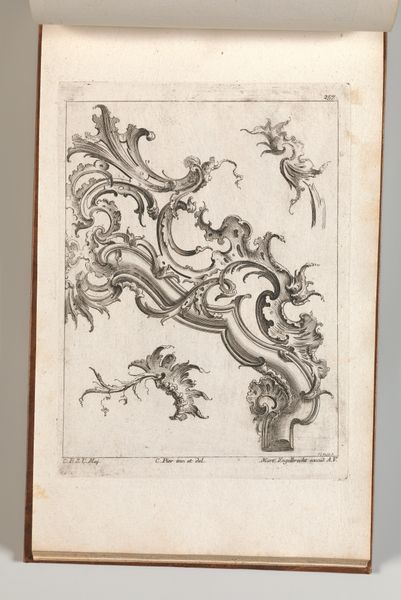
Suggestion for the Decoration of Lower Right and Top Right of an Altar Frame, Plate 4 from an Untitled Series with Rocailles Ornaments for Altar and Door Frames 1745 - 1755
0:00
0:00
drawing, ornament, print
#
drawing
#
ornament
# print
#
decorative-art
#
rococo
Dimensions: Overall: 8 7/16 × 13 3/4 in. (21.5 × 35 cm)
Copyright: Public Domain
Editor: This intricate drawing, "Suggestion for the Decoration of Lower Right and Top Right of an Altar Frame" by Wolffgang Christoph Mayr, was created sometime between 1745 and 1755. It is made of print on paper, meant as ornament and decoration. The design feels so elaborate. How can we even begin to understand this as a finished work? Curator: Look closely at the means of production, how such a design was popularized and consumed. Consider this less as a unique, precious artwork and more as a template, a mass-produced component in the larger economic system of the 18th century. Editor: So, rather than seeing it as a unique artistic creation, we should focus on how it was manufactured and used? What implications does this have for religious devotion at the time? Curator: Exactly. This print facilitated the replication of elaborate ornamentation in churches. Instead of skilled artisans meticulously carving each detail, simpler frames could be embellished using these designs. It speaks volumes about the commodification of religious expression, where spiritual grandeur became accessible through mass production. What do you make of that shift? Editor: It makes me wonder about the labor involved. Were local artisans displaced by these prints, or did they find new ways to incorporate them into their craft? Also, the scale seems relatively small—is the paper what dictated the size of altars at this time, or do we simply have to imagine it blown up? Curator: Excellent questions. Investigating the impact on local workshops and craftspeople is key. The size limitation imposed by the print material indeed challenges our conventional notions of scale in sacred spaces. Now think of other examples where technology determined material limits. Editor: I see now – that looking at the physical materials and production methods helps us understand the societal values and economic shifts that shaped even seemingly sacred spaces. Thank you. Curator: Precisely. By exploring materiality and process, we uncover the complex layers of meaning embedded within this decorative print.
Comments
No comments
Be the first to comment and join the conversation on the ultimate creative platform.
